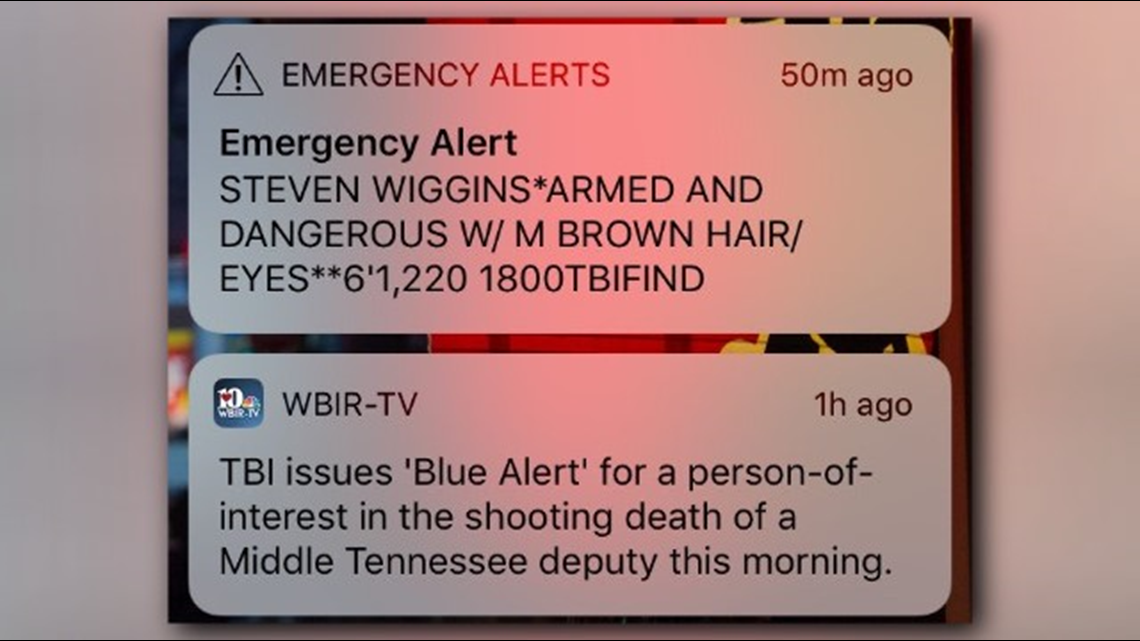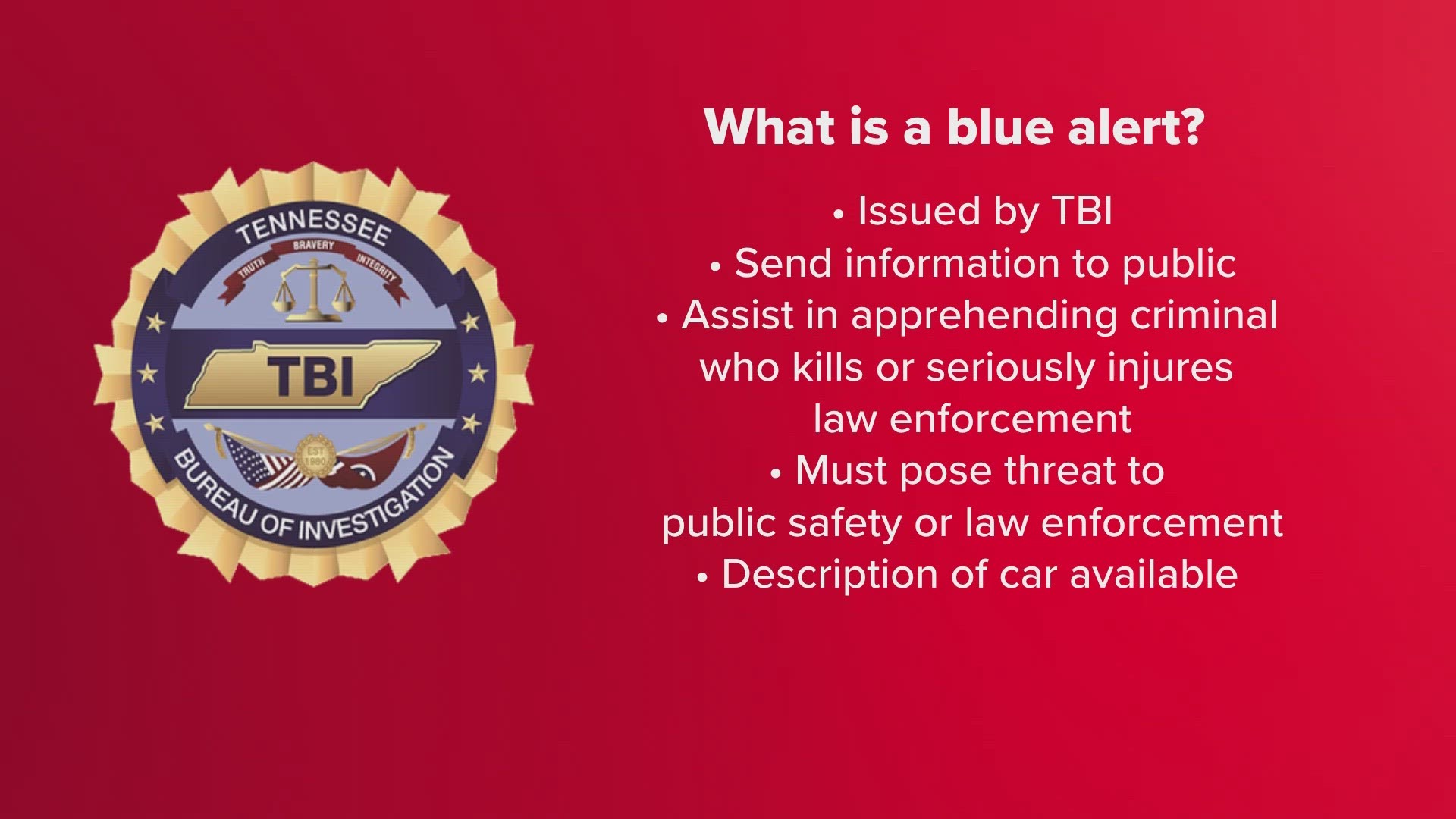KNOXVILLE, Tenn. — The Tennessee Bureau of Investigation issued a Blue Alert overnight for a suspect accused of shooting and killing a Blount County deputy Thursday evening. But what is a Blue Alert?
TBI issued a Blue Alert around 12:23 a.m. Friday and then a second alert with an updated link roughly 40 minutes later. These alerts went out across the state of Tennessee to people's phones and were labeled as a Public Safety Alert out of Maryville.
The first alert that was sent was supposed to contain a link leading to details about the shooting, however, the link that was included was broken due to what appears to be a typo and did not lead people to information about the shooting. The second alert sent shortly after 1 a.m. across the state included the correct link, which redirected people to the TBI's Facebook page when they opened it.


Tennessee started issuing these alerts on July 1, 2011. A Blue Alert is issued to quickly send information to the public "to assist in apprehending violent criminals who kill or seriously injure law enforcement officers in the line of duty or to aid in locating a missing officer where foul play is involved," according to the TBI.
Blue Alerts are issued only by the staff in TBI’s Criminal Intelligence Unit. When TBI receives a request from a law enforcement agency that a death or serious injury of a law enforcement officer, administrators will ensure that the Blue Alert criteria have been met.
According to TBI, that criteria includes:
- A sworn law enforcement officer is killed, sustains life-threatening injuries or the officer is missing in the line of duty under circumstances warranting concern for the law enforcement officer’s safety
- The suspect(s) pose(s) an imminent threat to public safety and law enforcement personnel
- A description of the offender or vehicle is available for statewide broadcast to the public and law enforcement 911 centers
- The head of any Tennessee law enforcement agency, Colonel of the Highway Patrol, Chief, Sheriff or their designee of the investigating law enforcement agency of jurisdiction requests the Tennessee Bureau of Investigation to activate the Blue Alert system
The last time TBI issued a statewide Blue Alert was on Oct. 21, 2023, after someone shot two officers in La Vergne. In June 2022, alerts were sent to find two men accused of shooting law enforcement officers in different parts of Middle Tennessee. Before that, the TBI issued a Blue Alert in May 2018 after a Dickson County deputy was killed.
The Blue Alert has generally been plagued with technical issues and limitations in the few times it has been used in Tennessee. In 2022 when a statewide Blue Alert was issued, the TBI apologized because several people across the state received audible Blue Alerts overnight long after the situation had been resolved. Similarly in 2018, the TBI apologized after a Blue Alert was sent across the state without a location or much context about what was going on -- containing just a name, a brief description of a person and the words "armed and dangerous."


The TBI responded in 2018 saying the alert system they use, known as IPAWS, could only convey a small amount of the information in an alert with a 90-character limit. The TBI said then it would work to find better ways to provide access to that information through the current structure it had to work with -- eventually landing on sending alerts with a link that leads people to public information on Facebook or its website.
IPAWS is the same system the state uses to send out other emergency alerts to phones, including AMBER Alerts.
The issues the TBI has seen with its Blue Alerts have been reported for many years with emergency phone alerts sent across the country that use the same system. Federal agencies have said these problems are largely due to lingering limitations with smartphone technology and how the national cellular alert system operates.
IPAWS was upgraded in 2019 to give authorities the option to send alerts up to 360 characters, but some phones still do not support the expanded alerts and can only receive 90 characters. The Federal Emergency Management Agency said it is considering making 360 characters the standard in the future once most people have newer phones with the capability to ensure "the maximum number of people get an alert."

